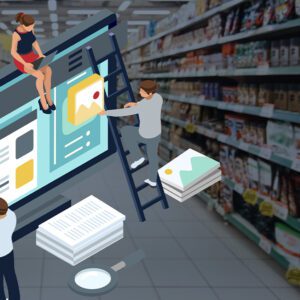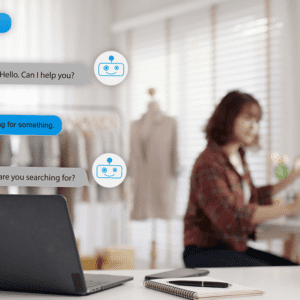Executive teams have historically looked at the customer journey as a funnel, aiming to bring consumers from an initial point of engagement through to a purchase. But leaders are increasingly reframing this journey and looking at it more as a circular loop. After all, the goal is to get your customers to buy from you over and over again, right?
That’s why brands and retailers are looking at the post-purchase experience as a new way for them to differentiate. And consumers agree, with 90% saying that the post-purchase experience is just as important as the quality of the products they’re getting. After all, this stage of the customer journey includes many elements, all of which must work well together, including:
- Order confirmation;
- Delivery scheduling;
- Customer interaction and service inquiries;
- Delivery and pickup updates;
- Feedback gathering on the delivery experience;
- Product set up and utilization messaging;
- Related product and service recommendations; and
- Information on product returns and recycling.
In a recent special report, Retail TouchPoints outlined key trends driving the evolution of post-purchase experiences, and five key things brands need to do to get it right.
1. Understand that expectations are everything: The biggest thing a brand can get wrong is not knowing what their core customer expects from the post-purchase experience. What do they need to feel confident that they’re not just getting the product they ordered, but also content and services that will support their purchase? How can you communicate how you plan to meet, even exceed, these expectations every step of the way? This includes communicating everything from delivery times to the supporting services available.
“Customers need retailers to set expectations accurately, manage them as things change, and then deliver as promised,” said Emily Pfeiffer, Principal Analyst at Forrester in an interview with Retail TouchPoints. “That requires starting pre-purchase, like displaying delivery timing in the cart before the customer completes their order. Post-purchase expectations management includes updating customers if, for instance, a package is delayed.”
2. Be ready to fix it when things go wrong: Mistakes happen, packages get lost or damaged, and deadlines are missed — which means every retailer must have a plan for remediation. What modes of communication are available if and when your customers are looking for insight?
While it’s always helpful to arm associates and live chat agents with communication guides and tools that will help them deescalate issues and solve problems, automated tools are becoming more common. In many cases, that means having a live chat bot to guide consumers toward content and resources that can help them answer their questions. In other cases, it might mean having self-service tools and capabilities that allow customers to access order information and get real-time delivery status updates.
“Whether it’s a human being that is making a phone call or it’s a quick email or SMS with a link that allows you to jump into a live chat, something that allows a conversation where possible is the ideal scenario,” said Bobby Stephens, Leader in the Digital Retail and Consumer Products Practice at Deloitte. “That way, a customer doesn’t feel like they’re just submitting a question or a problem into the ether and hoping that someone gets back to them.”
3. Use content and recommendations to maximize the customer experience: The worst thing a merchant can do after consumers make a purchase is send them a product recommendation email. “Instead of an upsell, use post-purchase messaging to provide helpful information about the product that’s coming,” Pfeiffer recommended. This is where branded, influencer and customer content can all play a role.
While consumers wait for their orders, keep the conversation going by sending messages with details on how to best use the products they’ve ordered. For example, a curated, influencer-driven guide on how to style a little black dress is a great way for a retailer to show customers how they can get the most value out of their purchase. It also shows that the retailer doesn’t just push products; it is a fashion curator and destination.
Content also can be extremely detailed. Installation videos are big in the home and DIY categories, while makeup brands have been building content arsenals thanks to the rise of beauty haul and tutorial videos. Brands need to closely assess what content is being created and shared on social media, fill gaps by creating their own content, and reuse and reshare this content with customers at all stages of the customer experience.
Consumers are increasingly critical of the post-purchase experience, so now is the time for brands and retailers to assess their approach and identify areas of improvement.
If you want new tips to help you identify where you stand and how you can invest in tools and tech to optimize the experience, download the special report now.
Advertisement
















